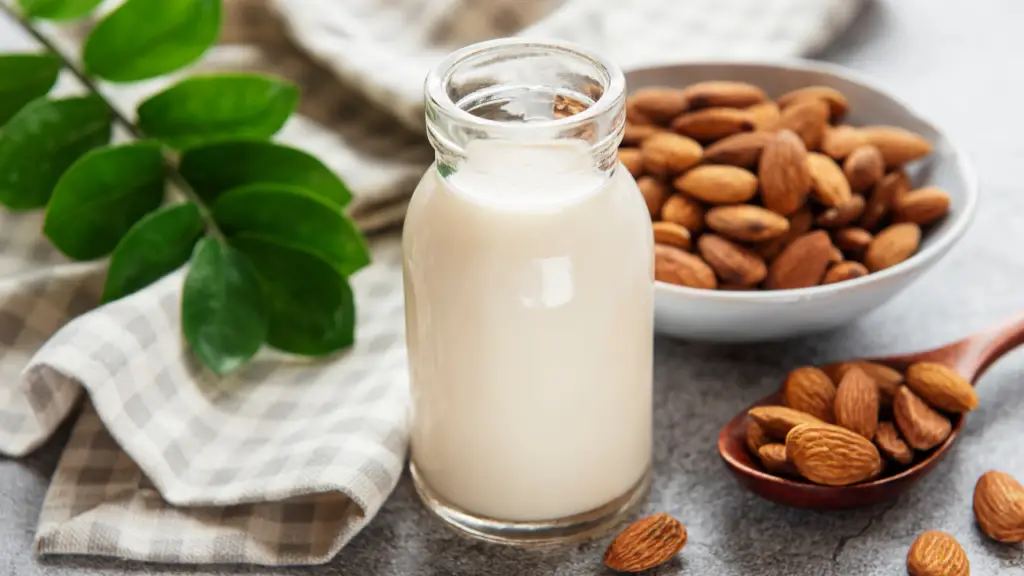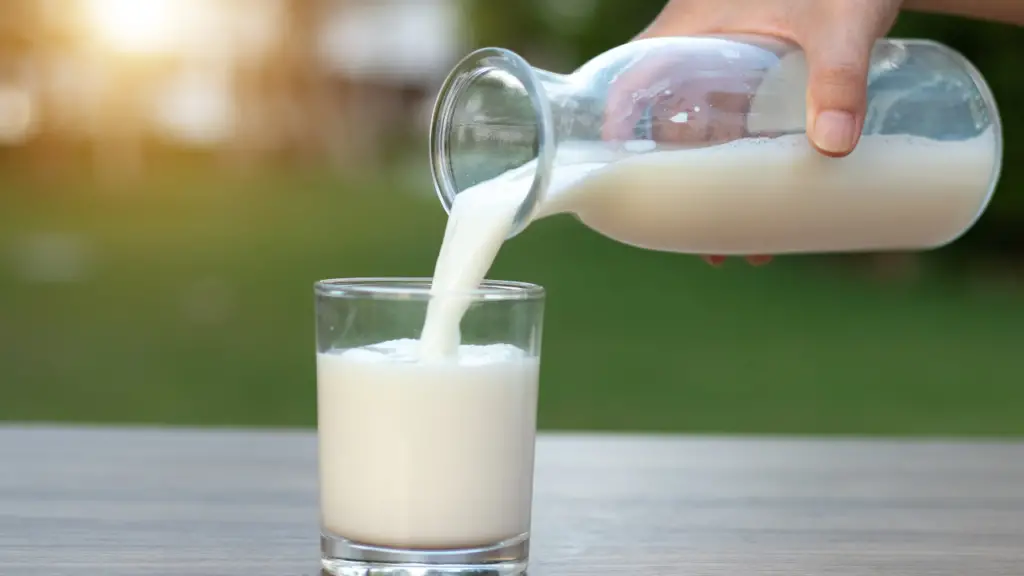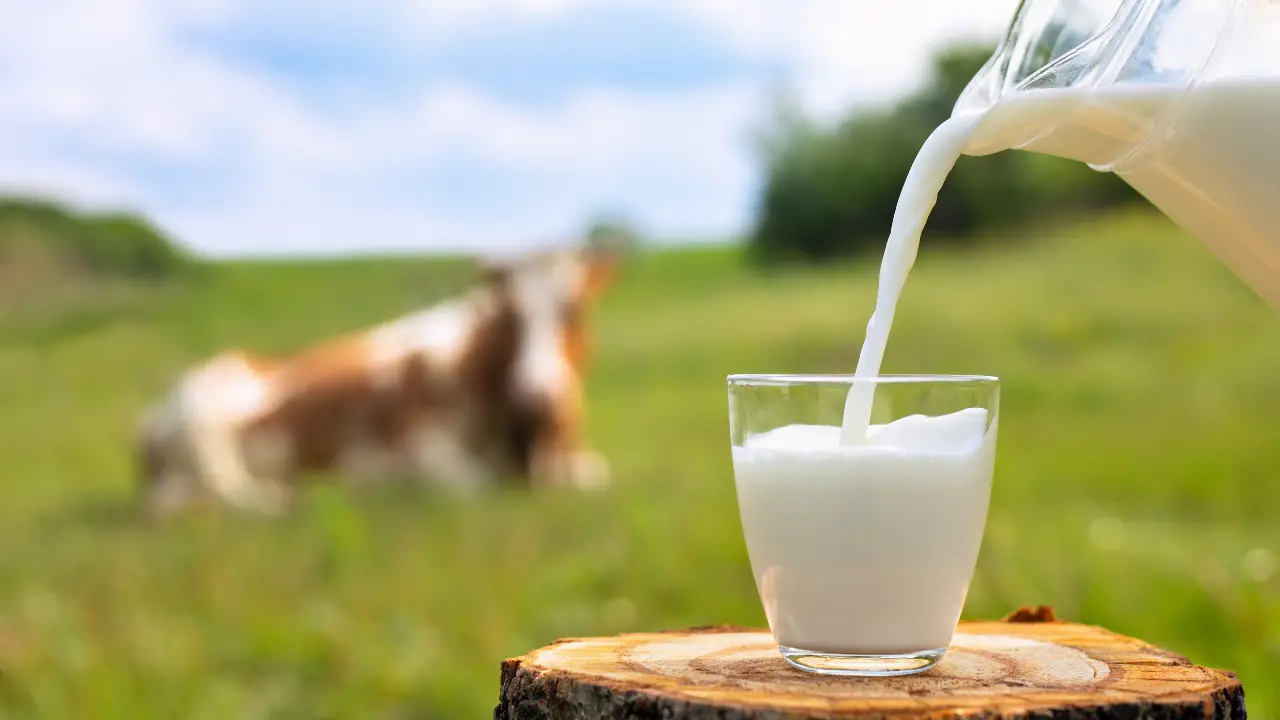Are you cutting down on sugar? Whether you have diabetes or just shifting to a healthy lifestyle, that's one of the first steps.
You may think you need to throw out those candies, chocolates, and white sugar, but sugar hides in more places than you'd expect.
For instance, most processed foods have sugar in them. But what about natural foods, like milk? Foods like this seem healthy, so would they have unhealthy amounts of sugar that you're trying to avoid? Let's find out!
What are the Different Types of Milk?
There are several bases for classifying milk into numerous different types.
If we focus on the source of the milk, there are two main types of milk. One is obtained from animal sources, and the other is from plant sources.
Animal-Based Milk Types:
Human breast milk:
Not only is human milk nutritious, but it has miraculous immunity-boosting properties. According to studies, breastfed babies have a decreased mortality rate and are less prone to respiratory and gastrointestinal diseases.
Cow's milk:
Cow's milk is of two different types, A1 and A2. The A1 milk contains proteins that are harder to digest and cause an inflammatory response.

On the other hand, A2 milk is easy to digest and usually does not cause many issues.
Goat's milk:
Not many people used to drink goat's milk. But as the knowledge of its excellent nutritional value became more common, more people started to switch to it. Goat's milk is easier on the stomach than cow's milk and is more easily digested.
Sheep's milk:
If you compare the nutritional value of cow's milk and sheep's milk, you'll find that the latter is superior. Not only does it have a higher solids content, but it also contains all the essential amino acids. These amino acids should be an important part of our diet since our bodies can't synthesize them.
Camel's milk:
It's not that common and is mainly used as a nutritional source for people living in harsh conditions. The nutritional content of camel's milk is excellent, with an abundance of immunity-boosting proteins, just like in human breast milk. Moreover, like goat's milk, it is also more easily digestible than cow's milk.
Plant-Based Milk Types:
Almond milk:
Almond milk is not the ideal perfect choice. Although it has some advantages, it also has some drawbacks. For instance, it does not contain gluten and lactose, so it's excellent for celiac and lactose intolerant patients.

Moreover, it contains certain fats that prevent inflammation. But it also includes a chemical compound called phytic acid, which prevents the absorption of calcium, zinc, and iron. Additionally, it also contains fewer proteins than animal milk.
Soy milk:
Soy milk has the exact amounts of proteins and calcium as animal milk. It also contains fewer calories and carbohydrates, which makes it a great and healthy choice. It would have been the perfect choice had it been well tolerated by patients with irritable bowel syndrome.
Oat and coconut milk:
These two types are pretty similar to each other and mainly differ when it comes to their sources. Both these types have excessive fats and carbs, which can prove detrimental to health. For this reason, nutritionists and health experts do not consider them a healthy choice.
What are the different types of milk based on the quantity of fat?

According to this classification, there are four types of milk, namely:
Whole milk:
Whole milk is ubiquitous and is preferred by many Americans. The distinguishing feature is that the milk's fat component weighs 3.25 percent of the entire weight. An 8-ounce glass of whole milk will contain about 8 grams of fat and 150 calories.
2% milk:
2 percent milk is also called reduced-fat milk. The fat content of this type is 2 percent of the total weight. And since this percentage is less than that of whole milk, hence the terms “2 percent” and “reduced-fat.” An 8-ounce glass of reduced-fat milk will contain 5 grams of fat.
Low-fat milk:
The fat proportion of low-fat milk is lower than both the types mentioned above. An 8-ounce glass of low-fat milk contains 2.5 grams of fat and 100 calories.
Skim milk:
Fat-free milk contains no fat and the least calories. You will get 80 calories by drinking an 8-ounce glass of skimmed milk. There is a misconception that food manufacturers add water to milk to reduce the fat content. This statement is false, as all the nutrients in the milk remain intact.
Does Milk Contain Sugar?
Now that we're past the basics and have decent knowledge about milk, let's jump to the main question. Is there sugar in milk?
There are different types of sugars. The ones that are found naturally in a food source are called natural sugars. These sugars are an essential part of the food's composition.

One of these natural sugars is lactose, a name you might have encountered before landing on this article. This natural sugar is one of the essential constituents of a nutrient-dense glass of milk.
Lactose, also called milk sugar, is the primary sugar in human breast and cow's milk. In the case of oat, rice, soy, and coconut milk, lactose may be replaced by fructose, glucose, or galactose. For this reason, you will find some sugar content on the nutritional label.
After experimentation, scientists found the natural sugar levels in different types of milk. On average, 1 cup of:
- Human breast milk contains 17 grams of lactose.
- Cow's milk (skim, whole, and 2 percent) contains 12 grams of lactose.
- Rice milk contains 13 grams of natural sugar.
- Soy milk contains 9 grams of natural sugar.
- Oat milk contains 5 grams of natural sugar.
- Coconut milk contains 3 grams of natural sugar.
- Almond milk contains 0 grams of natural sugar.
Is There Added Sugar in Milk?
Sometimes, natural sugars are only one constituent of the sugar content in your cup of milk. Several companies add sugar to enhance the taste and add a little sweetness to your milk.
This added sugar is different from the natural sugar in milk. It is merely a source of additional calories and has no nutritional value.

Since added sugar is not present in the milk intrinsically, it is not found in natural or fresh milk. On the other hand, sweetened and flavored varieties contain abundant added sugar.
A cup of chocolate soy milk contains 19 grams of added sugar. Similarly, a cup of sweetened coconut milk has 6 grams of sugar, while vanilla almond milk has almost 15 grams. These values are twice the amount found in unsweetened or unflavored versions.
Why Should You be Worried About Sugar in Milk?
Sugar is an important energy source and can benefit the body in several ways. But that isn't always the case. Sometimes, even the naturally present sugars in food items can cause complications and pose a significant health threat.
Here is why you should worry about lactose and added sugar in milk.
Lactose:
Our body contains different enzymes that digest food and break into smaller subunits. These subunits are then utilized to obtain energy.
One of these enzymes is lactase, which breaks lactose into its two subunits. These subunits are absorbed into the blood from the small intestine and transported to wherever they're required.
The absence of lactase leads to the accumulation of lactose in the small intestine since it can't be digested. The lactose goes to the colon from the small intestine and interacts with the bacteria.
As a result of this interaction, several gases and acids are produced, which cause the onset of many gastrointestinal symptoms. The most common ones are bloating, diarrhea, nausea, vomiting, flatulence, and stomach cramps.

This condition is called lactose intolerance, when your body can't tolerate the lactose in your milk. It occurs mainly because of a deficiency of lactase enzyme.
Some people are lactose intolerant by birth and suffer from this disease due to genetic reasons. On the other hand, the lactase production of other patients might be sufficient after birth but fall rapidly by adulthood.
So, if you're lactose intolerant, you need to worry about the lactose in your milk and actively avoid it.
Added Sugar:
You don't have to worry about lactose if there is enough lactase in your small intestine. But lactose isn't the only type of sugar in milk. Although the added sugar makes the flavored and sweetened milk taste way better, it also has many adverse effects.
Diabetes is one of the most common ailments in the world. A raised level of blood sugar characterizes it. Diabetic patients are advised to limit their sugar intake and avoid food items that are a rich source of glucose.
As we discussed, a single cup of sweetened or flavored milk contains enough calories to spike blood sugar levels.

Another common disorder, especially in the United States, is obesity. Sweetened or flavored milk affects the metabolism and leads to fat deposition.
As a result, long-term consumption accelerates the process of weight gain, and the person will eventually become overweight and possibly obese. If you continue your sweetened milk consumption, you will exponentially increase your likelihood of suffering from cardiovascular disorders.
The added sugar in milk is not great for teeth, either. The bacteria in your teeth feast on the added sugar and produce acid as a by-product. This acid leads to tooth decay and creates cavities. An excessive amount of sugar intake can also prove detrimental to your liver.
How Can You Avoid Sugar in Milk?
Well, there is no need to worry about that because we have you covered. You might not need more reasons to avoid sugar in milk, whether it is lactose or added sugar.
But you may need some tips on how to avoid this sugar after all. Based on the sources and types, there are two ways to avoid sugar in milk.
Lactose-free milk:
Remember the reason why patients with lactose intolerance suffer from their condition? The enzyme lactase is absent from their body. But what if we add lactase to milk instead?
That way, the lactose in milk will break down into simpler components. Without the trouble-causing molecule, the milk will pose no threat, and the patients won't experience any worrisome symptoms.
And to top it all off, lactose-free milk has the same nutritional value as regular dairy milk. Moreover, the protein content is almost the same, with a 1-cup serving containing about 8 grams.

Since the primary difference between the two types is lactase, lactose-free milk is a perfect source of vitamins and minerals.
Lactose-free milk tastes slightly sweeter than regular milk, but that's not because it has more sugar. Our taste receptors are more reactive to glucose and galactose than to lactose.
And since the lactase breaks the lactose into glucose and galactose, we perceive the milk to be sweeter. Other than that, both kinds of milk taste the same.
There are two ways to get lactose-free milk. You can make it yourself by buying or ordering lactase and adding it to the milk according to instructions.
For instance, if you order lactase from Lacteeze, add four drops of it to 4.5 cups of milk. If you want your milk to be completely lactose-free, add 8-10 drops and refrigerate again. After refrigerating for 24 hours, only 20-30 percent of the entire lactose will be left.
Or, you can save yourself from this hassle and buy your milk from a lactose-free brand. We will talk about these brands in the subsequent section.
Sugar-free milk:
We discussed several reasons why added sugar in milk harms your health. Once you start drinking sugar-free milk, there are several ways to avoid added sugar.
If you're buying milk from a store, make sure it's not flavored. Flavored varieties have almost twice the amount of added sugar compared to unflavored milk.
Sometimes, even the unflavored bottles or cans have added sugar, and there are several ways to find out. For starters, look for words ending with “-ose,” as most are sugars.

Similarly, keep an eye out for syrups like maple or malt syrup. Some manufacturers add nectars or fruit juices to taste sweet, while others use honey. If you find any of these items in the ingredient list, avoiding that milk is best.
Or you can buy from a brand that refrains from adding sugar to their products. We will discuss these brands in the subsequent section.
Best Zero-Sugar Milk Brands
Some people are lactose intolerant and want to find a reputable lactose-free milk brand. Others would like to reduce their added sugar intake or avoid the brands that make flavored milk.
To make it convenient for all our readers, we have shortlisted a few brands that sell zero-sugar milk. Their products neither contain lactose nor added sugar. Here are the best among them:
Maple Hill:
Maple Hill is a company striving to make organic, 100 percent grass-fed dairy and dairy products. The company's ultra-filtered milk is the first zero-sugar cow's milk.

It neither contains lactose nor any added sugar or sweetener. With the help of a filtering process, the company removes the milk's lactose, sugar, and other carbohydrates. If you want to reduce your fat intake, you can buy the zero-sugar 2 percent reduced fat version.
Califia Farms:
If you are looking for a brand that makes different dairy-free, plant-based, multi-talented products, look no further than Califia Farms. Its unsweetened almond milk is arguably the best zero-sugar milk to pour over cereal or blend into a smoothie.
It also boasts numerous reasons for you to love it. It only contains 35 calories per serving and is an excellent source of calcium. And to top it all, it's vegan, gluten-free, kosher, BPA-free, soy-free, carrageenan-free, and non-GMO verified.
Chobani:
Whoever said the food sector has no place for innovation hasn't heard of Chobani. The company has thrived because of its creation to make nutritious food while meeting its customers' ever-changing demands.
Chobani's non-dairy zero-sugar oat milk is one example of it. If you're an avid milk drinker, not only will you enjoy sipping it, but you'll also reap numerous benefits.
A single serving of this milk contains a decent amount of calcium, vitamins, and protein. In addition, it is also gluten-free, vegan-friendly, and kosher-certified
Final Verdict
Well, there you have it. Milk contains two types of sugar – natural sugar, lactose, and added sugar. Unless you're lactose intolerant, all-natural milk is the best way.
Lactose isn't harmful but good for your health. You can explore plant-based milk options almost everywhere on a vegan diet. However, lactose-intolerant individuals should consume lactose-free milk only.
Meanwhile, added sugars are the real culprit, and avoiding milk types with unnecessary added sugar is recommended.
Adding sugar-free milk to your diet is another excellent option. Whatever the case, choose the healthiest milk for your body.






